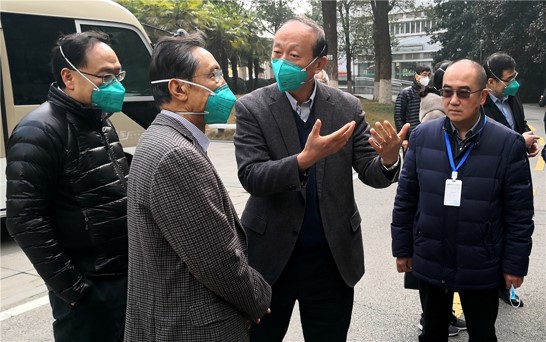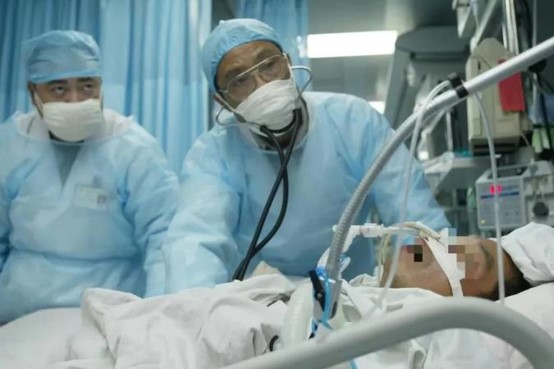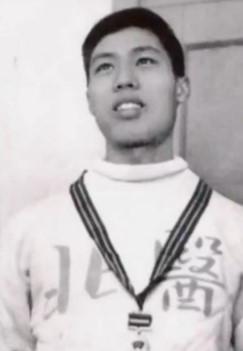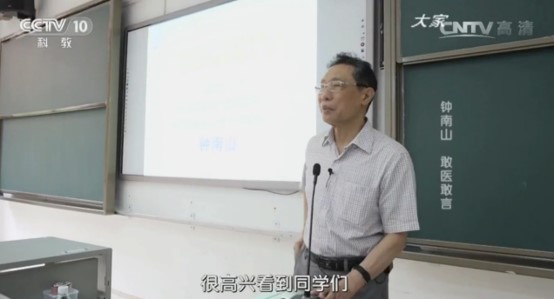PKU alumnus Zhong Nanshan: A doctor with a caring heart
Feb 11, 2020
Peking University, Feb. 11, 2020: The peak of the novel coronavirus (COVID-19) outbreak may come in middle or late February, followed by a plateau and then decrease, said PKU alumnus Zhong Nanshan, an epidemiologist and expert of respiratory disease during an interview with Reuters on February 11.
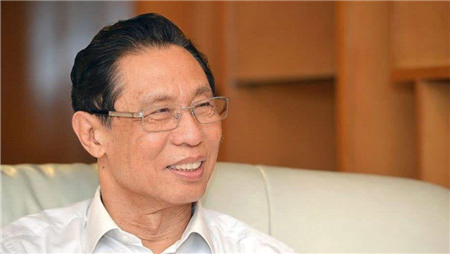 Zhong Nanshan
Zhong Nanshan
Zhong Nanshan, once known to China as the SARS hero, was again put under spotlight because of the COVID-19 outbreak. The 83-year-old epidemiologist was appointed head of the National Health Commission expert panel conducting research on the novel coronavirus outbreak. During the past month, Zhong plunged into a nonstop fight against the COVID-19 outbreak.
On Jan. 18, while millions of Chinese were heading back home for the upcoming Lunar New Year, Zhong took high-speed railway to Wuhan, capital city of Hubei Province and the epicenter of the COVID-19 outbreak. Because of the shortage of train tickets, Zhong only took a short rest at the dining car of the train.
Zhong Nanshan takes a break at the dining car
After careful inspection, Zhong admitted on Jan. 20 that the virus can be transmitted from person to person and advised people not to travel to and from Wuhan. Three days later, Wuhan was put in lockdown.
During the interview with Reuters, Zhong reflected that the lockdown of Wuhan is “definitely necessary” to control the spread of the virus. “If it is delayed for a couple of days, that will cause much more spreading all over China as well as the world,” said Zhong.
Zhong Nanshan learns about the outbreak of the novel coronavirus pneumonia at the Jinyintan hospital in Wuhan, Hubei province
Zhong, who also led the fight against the SARS epidemic in 2003, said that COVID-19 is more contagious compared to SARS and we still know little about the infectivity, toxicity and transmission route of the virus.
Recently, Zhong and his team have issued a preprint article on the clinical characteristics of the virus based on a study of 1,099 diagnosed patients. The article, stating that the longest incubation time can be 24 days instead of 14 days, raised questions among the public. Facing the questions, Zhong clarified that only one out of the 1,099 patients was found to have an incubation period of as long as 24 days, while the median incubation period is 4 days. Zhong stressed that the article still needs to be peer reviewed and “should not be over-interpreted.”
Zhong is optimistic that the epidemic will be under control. He said that there is already a reduction in the number of newly diagnosed patients in some provinces such as Guangdong and Zhejiang, which is “good news for us.”
Zhong looks back the epidemic itself and advised that China should set up “a very strict law or stipulation” to ban wildlife trade after this outbreak. He also advised other countries to be on guard of any new kind of coronavirus infection in the future.
“Transfer all the critically ill patients to me”
Zhong became known to every Chinese household during the SARS outbreak in 2003 and was considered as a “SARS hero.” Facing the complex situation, Zhong was the first to publicly admit that the epidemic was “not under control” and no one knew what was the cause or the correct treatment of the virus, which raised the public’s attention to the seriousness of the virus.
“I have been taught to speak honestly and to be an honest man since childhood. This is what I did during the time of SARS,” said Zhong during an interview with CCTV’s Great Masters program.
During the peak of SARS outbreak, there was a mass panic among medical staff. After a few consultation meetings at several hospitals, Zhong told them to “transfer all the critically ill patients to me.” Zhong, then the associate director of Guangzhou Institute of Respiratory Health, developed an effective treating method for SARS together with other medical staff.
Zhong Nanshan (right) treats SARS patient
Zhong and Guangzhou Institute of Respiratory Health became a new hope for SARS patients. “It is him (Zhong Nanshan) who pulled me back from death…I wouldn’t be here today if it wasn’t for him,” said Liang Hedong, one of Zhong’s patients.
From an athlete to a doctor
Zhong grew up in a family of doctors. His father Zhong Shifan is a well-known pediatrician and his mother Liao Yueqin is one of the founders of the Tumor Hospital of Guangdong Province. Following the family tradition, Zhong Nanshan was admitted to Beijing Medical University in 1955, which is today’s Peking University Health Science Center.
Many know Zhong as a famous doctor, but few know that he was once an outstanding athlete. Zhong has displayed athletic talents early on. During his time at Beijing Medical University, he broke the school’s record for the 110-meter and 400-meter hurdles.
In 1958, Zhong, then a junior year student, was selected to join the Beijing municipal sports training team to prepare for the first National Games of the People’s Republic of China in 1959. After a year’s training, Zhong broke the national record for the 400-meter hurdle with a score of 54’’02.
Zhong Nanshan was conferred a gold medal after winning the 400-meter hurdle at the first National Games of China
After the National Games, The Beijing Municipal Track and Field Team attempted to recruit Zhong as a professional athlete. After careful consideration, Zhong declined the offer and decided to continue his study for a doctor. Zhong explained his decision in an interview: “I think my stature and body constitution are not good enough. At best, I can only reach the level of Asia, and can never reach the level of the world. Therefore, I think I have no future as an athlete.”
Although Zhong did not choose to be a professional athlete, his love for sports never dwindled. Despite his busy schedule as a doctor, Zhong works out 3 or 4 times every week. Recently, a group of photos showing Zhong’s muscular body has gone viral on the Internet. Years of physical exercise gave Zhong a robust stature and a healthy body, allowing him to continue marching forward in the medical field.
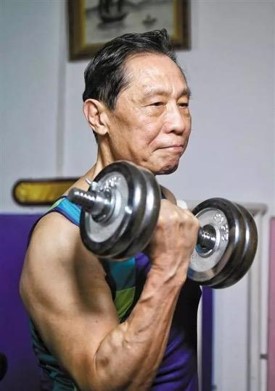 Zhong Nanshan’s muscular body
Zhong Nanshan’s muscular body

Zhong Nanshan exercises
A doctor with a caring heart
“You need to bear in mind that the most important thing is not treating the disease, but treating the patient,” said Zhong during a lecture at Guangzhou Medical University. Zhong believes that caring for patients and giving patients comfort and hope are equally important as treating the disease. “We need to heal their hearts and treat the disease,” said Zhong.
Zhong Nanshan gives a lecture at Guangzhou Medical School
Zhong’s life has always been closely linked with his patients and with the development of the nation. During the SARS outbreak, Zhong personally examined the mouth and throat of every critically ill patient in his hospital, giving them comfort and strength to fight the disease. During the subsequent epidemics of H1N1 and H7N9 flu, Zhong also stood up as a spokesperson to popularize knowledge on public health and give advice to the government concerning the improvement of the public health emergency response system.
For the past 50 years, Zhong has dedicated himself to treating respiratory diseases including epidemics, asthma, chronic obstructive pulmonary diseases (COPD) and lung cancer. The results of his research on early prevention of COPD was included in World Health Organization’s Global Strategy for the Diagnosis, Management, and Prevention of COPD.
At the age of 84, Zhong is still fighting on the frontline of the novel coronavirus outbreak. With his professional medical skills and unwavering perseverance, Zhong has become a spiritual anchor for Chinese people at this difficult time.
Right now, there are numerous medical staff just like Zhong who are fighting this battle together. “Wuhan has always been a heroic city,” said Zhong during an earlier interview on Jan. 29. “With a vigorous spirit, a lot of problems can be solved. And with the help of the whole nation, Wuhan will be able to defeat this virus.”
Written by: Xu Penghang
Edited by: Zhang Jiang
Photo credit to: Guangzhou Daily, China Daily


